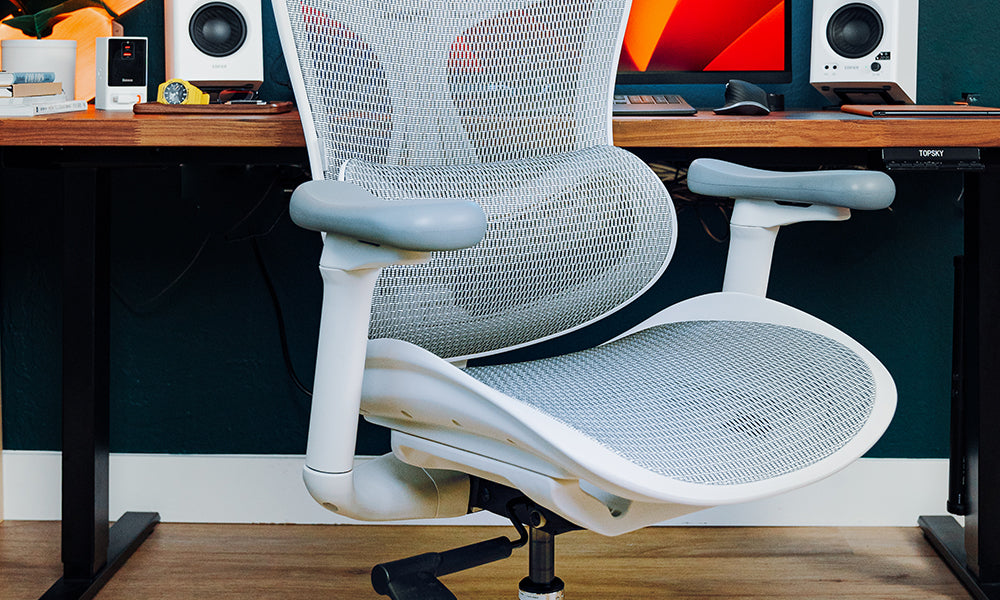According to the American Chiropractic Association, approximately 80% of adults experience back pain at some point in their lives. One solution that has gained traction in recent years is the ergonomic chair. But can these specialized chairs genuinely help prevent lower back pain? Let’s explore this topic in depth.
Understanding Lower Back Pain
Lower back pain can stem from various factors, including poor posture, prolonged sitting, muscle strains, and underlying medical conditions. When sitting for extended periods, many individuals adopt poor posture, which places undue stress on the lumbar spine and surrounding muscles. This often leads to discomfort and pain.
Ergonomic chairs are designed with the human body in mind, aiming to provide support and comfort that traditional chairs lack. Their features often include adjustable seat heights, lumbar support, seat depth adjustments, and armrests, all aimed at promoting better posture and reducing strain.
The Role of Ergonomic Chairs
1. Promoting Proper Posture
One of the key benefits of ergonomic chairs is their ability to promote proper posture. A well-designed ergonomic office chairs encourages users to maintain a neutral spine position, reducing the likelihood of slouching. Proper posture distributes body weight evenly, minimizing pressure on the lower back.
2. Lumbar Support
Many ergonomic chairs come equipped with built-in lumbar support that can be adjusted to fit the natural curve of the lower back. This feature helps maintain the natural alignment of the spine, preventing excessive arching or flattening of the lumbar region. Research has shown that adequate lumbar support can significantly reduce the risk of developing back pain, especially for those who sit for long hours.
3. Adjustability
Adjustability is a crucial factor in ergonomic chairs. Different body types require different settings for optimal comfort and support. Ergonomic chairs allow users to customize their seating experience by adjusting the seat height, backrest angle, and armrest position. This ensures that individuals can find the best configuration to support their unique anatomy, reducing the risk of discomfort and pain.
4. Encouraging Movement
Ergonomic chairs often promote movement, which is essential for maintaining healthy circulation and preventing stiffness. Some designs include features like swivel bases and tilt mechanisms, encouraging users to shift their weight and change positions frequently. This movement can help alleviate pressure on the lower back and promote overall spinal health.
5. Improved Comfort
Comfort plays a significant role in preventing lower back pain. Ergonomic chairs typically feature cushioning that supports prolonged sitting without causing discomfort. The use of breathable materials can also prevent overheating and enhance comfort, allowing users to remain seated for longer periods without experiencing pain.
Evidence Supporting Ergonomic Chairs
Numerous studies have investigated the impact of ergonomic chairs on lower back pain. A systematic review published in the Journal of Occupational Rehabilitation found that ergonomic interventions, including the use of ergonomic chairs, significantly reduced the prevalence of back pain among office workers. Additionally, a study in the International Journal of Industrial Ergonomics indicated that employees who used ergonomic chairs reported fewer instances of lower back pain and improved overall comfort compared to those using standard office chairs.
While these studies suggest a positive correlation between ergonomic chairs and lower back pain prevention, it’s essential to recognize that they are just one piece of the puzzle. Ergonomics encompasses not only chair design but also workstation setup, habits, and lifestyle choices.
Other Considerations for Back Health
While ergonomic chairs can help prevent lower back pain, they are not a panacea. Here are additional strategies to consider:
1. Desk Setup
Ensure your workstation is ergonomically designed. The top of your computer monitor should be at eye level, and your feet should rest flat on the ground. Your knees should be at a 90-degree angle, and your elbows should be close to your body at about 90 degrees as well.
2. Take Breaks
Prolonged sitting is detrimental to spinal health. Schedule regular breaks to stand, stretch, and walk around. Incorporating short walks or stretches can help alleviate muscle tension and improve circulation.
3. Exercise Regularly
Regular physical activity strengthens the core and back muscles, providing better support for the spine. Incorporate exercises that focus on flexibility, strength, and stability to enhance overall spinal health.
4. Listen to Your Body
Pay attention to your body's signals. If you experience discomfort or pain while sitting, adjust your posture or take a break. Ignoring discomfort can lead to chronic pain over time.
Conclusion
In summary, ergonomic chairs can play a significant role in preventing lower back pain by promoting proper posture, providing lumbar support, and offering adjustability. However, they should be part of a broader approach to back health that includes workstation setup, regular breaks, exercise, and mindfulness of body signals. By integrating these elements into your daily routine, you can create a healthier work environment that reduces the risk of lower back pain and enhances your overall well-being.
Investing in an ergonomic chair is a step in the right direction, but remember that maintaining a healthy spine is a comprehensive effort requiring attention to multiple factors.



































